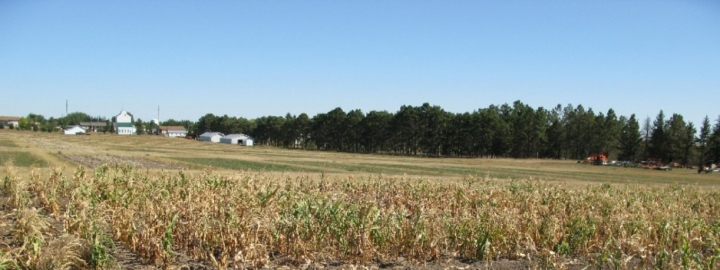Summary
Investigator: Dave Christensen, Seed We Need, Big Timber, Montana
Project locations: Montana, North Dakota, Ohio, Wisconsin
Related links: Dave Christensen talks about his breeding work in 2009. Listen»
Many people are familiar with corn with transgenic resistance to European corn borer (ECB), marketed as “Bt corn.” Fewer know that there are natural forms of resistance to ECB that could be used on certified organic farms. The genes for this resistance, found in tropical corn populations, have been bred into populations adapted to the Midwest.
 There are, however, several challenges to moving varieties with these traits onto organic farms. First, these ECB-resistant populations have not been completely taken through the process of selfing and yield testing so that they can be released as high-yielding, naturally-resistant varieties. Second, evaluation on organically-managed fields has not occurred and selection thus far may not be identifying the lines of greatest value to organic farmers. ECB-resistant populations are generally very late in maturity and adapted only to the central Corn Belt. They are not directly useful in the upper Midwest and the drier West. Finally, these lines are susceptible to outcrossing with transgenic corn as are most normal corn lines.
There are, however, several challenges to moving varieties with these traits onto organic farms. First, these ECB-resistant populations have not been completely taken through the process of selfing and yield testing so that they can be released as high-yielding, naturally-resistant varieties. Second, evaluation on organically-managed fields has not occurred and selection thus far may not be identifying the lines of greatest value to organic farmers. ECB-resistant populations are generally very late in maturity and adapted only to the central Corn Belt. They are not directly useful in the upper Midwest and the drier West. Finally, these lines are susceptible to outcrossing with transgenic corn as are most normal corn lines.
A diverse group of collaborators is addressing these challenges. We are continuing selection in three populations with natural ECB resistance. Thirty-five inbred lines have been crossed onto a tester (B103/SD46) and will be assessed on organic farms in the Midwest for ECB resistance. Progenies that have resulted from crosses of these populations with early maturity lines are being similarly moved along in the breeding process. Forty lines from Painted Mountain have been crossed onto a tester (Early Riser) to be assessed for yield under organic management in the West. The best performing lines from Painted Mountain will be crossed with the best ECB resistant lines in order to bring ECB resistance farther north and west. Superior lines will be crossed with sources of Ga1s, a natural gene that reduces outcrossing with populations that do not carry this trait.
At the end we will have naturally ECB-resistant lines and populations of corn selected for adaptation to organic production methods across the target region and more lines ready for testing. We hope some will be ready for immediate commercial release and that outcrossing resistant lines will be ready just a few years later.
